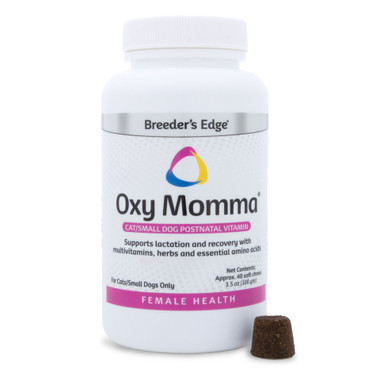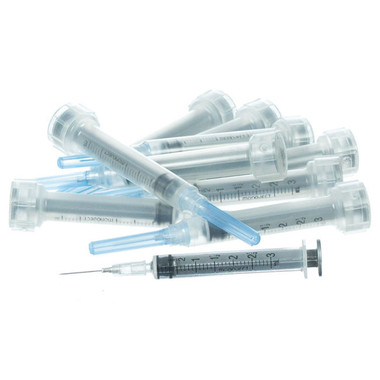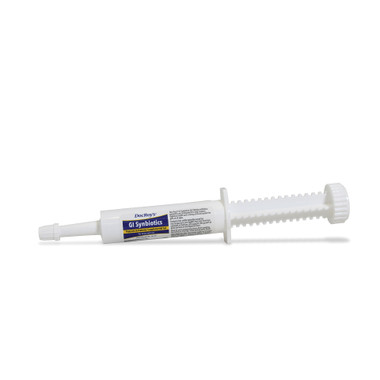How to Treat a Dog Fever at Home
Estimated 0 min read

Learning the signs of dog fever
Spotting a fever in your furry friend isn’t always straightforward. Unlike humans, dogs can’t just tell us when they’re feeling under the weather. That’s why knowing the signs of fever and how to respond can make all the difference.
From learning how to accurately measure your dog’s temperature to recognizing when it’s time to call the vet, we’ll cover the essentials you need to ensure your dog’s health.
Whether it’s a cool compress or knowing the dangers of human medications, this blog will equip you with practical tips to keep your dog comfortable and safe.
What to Know About Dog Fevers
A dog’s normal body temperature ranges between 101° to 102.5° Fahrenheit, and any reading above 103° F is considered a fever. If the temperature reaches 106° F or higher, it is critical, necessitating immediate veterinary intervention. The most accurate way to measure a dog’s temperature is using a digital rectal thermometer. If your dog has a fever, applying cool water-soaked towels to their ears and paws can help reduce their temperatureVeterinary consultation is advised for fevers of 103° F or higher, especially if accompanied by other symptoms such as shivering, panting, or vomiting.
What temperature is a dog fever?

Dog with fevers can act lethargic
A dog’s normal body temperature typically ranges between 101° and 102.5° Fahrenheit. When a dog’s temperature exceeds 103° F, it is considered a fever.
Symptoms of Dog Fever
Recognizing fever in dogs is vital as their temperature can also increase due to stress or excitement, not just illness.
The most telling signs of fever include lethargy, shivering, warm ears, and a noticeable reduction in appetite.
Contrary to popular belief, the condition of a dog’s nose — wet and cold or dry and warm — is not a reliable indicator of fever.
Causes of Fever in Dogs
Dog fever can result from various conditions, which we explore in more depth below.
Bacterial Infections

Causes could be a viral, bacterial, or fungal infection
Bacterial infections trigger fever in dogs as the body’s immune response activates to fight off the invading pathogens. Common bacterial infections in dogs include leptospirosis, which affects the kidneys and liver, and brucellosis, which primarily impacts reproductive organs but can spread systemically. These bacteria release toxins and cause inflammation, prompting the immune system to increase the body’s temperature, which can help inhibit the bacteria’s ability to reproduce.
Viral Infections
Viral infections cause fever due to the body’s immune response against the virus. For example, canine distemper virus affects the respiratory, gastrointestinal, and central nervous systems, initiating an immune response that raises the body’s temperature as a defense mechanism. Similarly, parvovirus, which attacks the gastrointestinal system, triggers fever as the body tries to fend off the virus and prevent it from multiplying.
Fungal Infections
Fungi like Blastomyces, which dogs can inhale from soil, infect the respiratory system and can disseminate to other body parts. The immune system’s reaction to such fungal infections includes raising the body temperature to create an inhospitable environment for the fungi, which often thrive at lower temperatures. This immune response results in fever, which serves as a signal that the body is fighting an infection.
Inflammatory Medical Conditions
Conditions such as pancreatitis involve the inflammation of the pancreas. This inflammation triggers the release of inflammatory cytokines and other immune mediators, which not only help in fighting the inflammation but also raise the body’s core temperature, resulting in fever. Similarly, inflammatory bowel disease causes inflammation of the gut lining, leading to fever through the release of these immune mediators.
Immune System Disorders

Sometimes fever occur after vaccinations
Autoimmune diseases like systemic lupus erythematosus (SLE) cause the body’s immune system to mistakenly attack its own tissues, believing them to be foreign. This internal ‘battle’ causes inflammation and fever as the body attempts to rid itself of what it incorrectly perceives as invaders. Immune-mediated hemolytic anemia (IMHA) also causes fever due to the destruction of red blood cells and the subsequent inflammatory response.
Ingestion of Toxic Substances
When dogs ingest toxic substances such as antifreeze, certain human medications, or toxic plants, their bodies initiate a fever response as part of the systemic inflammatory response to the toxin. The fever serves as a defense mechanism, aiming to detoxify and eliminate the harmful substances from the body.
Post-Vaccination Reactions
After vaccinations, dogs often exhibit what is known as vaccine-associated fever. This occurs because vaccines stimulate the dog’s immune system to mount a defense against the antigen presented by the vaccine, mimicking an infection and often resulting in a mild fever. This is a normal and expected reaction indicating that the vaccine is effectively stimulating the dog’s immune system.
Fever of Unknown Origin (FUO)
FUO in dogs is a term used when a fever persists without an identifiable cause despite thorough investigation. It suggests a potential underlying condition that is not apparent through standard diagnostic tests. This could involve obscure infections, hidden cancers, or immune system abnormalities that continually stimulate the immune response, leading to prolonged fever.
How to Check Your Dog’s Temperature
To accurately check if your dog has a fever, a digital rectal thermometer is the most reliable tool. Here is a step-by-step guide to safely check if your dog has a fever.
- Before you begin, ensure you have a pet-specific thermometer.
- Lubricate the thermometer’s tip with petroleum jelly or a water-soluble lubricant for comfort.
- Gently lift your dog’s tail and carefully insert the thermometer about one inch into the rectum. (It’s helpful to have someone assist by holding your dog still during this proces)
- Wait until the thermometer beeps, indicating the temperature has been recorded.
- Remove it gently and clean it after each use.
You may wonder why it is that this step-by-step guide for checking if your dog has a fever assumes you would use a rectal thermometer. This is because rectal thermometers are widely regarded as the gold standard for measuring a dog’s temperature. This is due to their direct contact with the mucous membrane, providing a core body temperature reading.
Ear thermometers, on the other hand, are particularly useful for quick assessments or for dogs that are not tolerant of rectal temperature measurement. Ear thermometers for dogs measure the infrared heat waves emitted from the eardrum area. However, this means that ear thermometers sometimes show varied results if not positioned correctly.
How to Help Your Dog’s Fever at Home

Get your dog hydrated
When your dog’s temperature exceeds 103 F, it’s crucial to begin cooling measures to safely reduce their fever. Start by soaking a towel or cloth in cool water and gently applying it to your dog’s ears and paws. This can help pull heat away from the body. Additionally, placing a fan near your dog can help enhance the cooling effect by evaporating the moisture from their fur, which helps lower their body temperature. Monitor the temperature closely, and cease the cooling once their temperature drops below 103 F to avoid overcooling.
Hydration is essential when managing fever in dogs. Encourage your dog to drink small amounts of water regularly to maintain hydration. However, it’s important not to force water upon them, as this could cause stress or choking. Proper hydration helps regulate body temperature and maintain normal physiological processes, which can be crucial for recovery.
You must also remember to never administer human medications like acetaminophen or ibuprofen to your dog. These substances are toxic to dogs and can lead to severe health complications, including liver failure and death. Always consult with a veterinarian before giving your dog any new medication, especially those not specifically formulated for pets.
When to Go to the Vet for a Dog Fever

Dog visiting vet for fever
A dog’s fever reaching 106 F or higher is a medical emergency. In such cases, it’s critical to contact an emergency veterinarian immediately. High fevers can lead to serious complications if not addressed promptly.
If your dog shows other signs of illness such as shivering, panting, vomiting, or general lethargy along with a fever, it is time to consult your veterinarian. These symptoms can indicate underlying conditions that need immediate evaluation and treatment.
When visiting the vet, be prepared to provide detailed information about your dog’s symptoms, their onset, and any recent activities or incidents that might have contributed to their condition. This includes any chance of exposure to toxins, recent injuries, or unusual behaviors. Additionally, inform your vet about any medications your dog is currently taking or has recently taken.
Your veterinarian might require various diagnostic tests to determine the underlying cause of the fever. These can include blood tests, urinalysis, X-rays, or more specific tests depending on the suspected cause of the fever. Understanding these potential causes and the appropriate responses not only helps in treating the current condition but also prepares you for any similar future incidents.
As we navigate the complexities of canine health together, remember that recognizing and responding to symptoms like fever can greatly influence your dog’s well-being. At Banixx, we are committed to providing you with not only the necessary tools but also the essential knowledge to ensure your furry friend leads a happy and healthy life.
Join us as we continue to uncover more ways to enhance your pet’s health, ensuring you have the resources to foster a nurturing and caring environment for your beloved canine. For all your pet care needs and queries, make Banixx your trusted companion!
Banixx for Dog Lovers
Visit us again for more straightforward, expert advice on caring for your furry friend. At Banixx, our commitment extends beyond today’s insights. We invite you to stay tuned to Banixxblogfor the latest in canine care. Here, we blend scientific knowledge with a deep love for dogs, ensuring your pet enjoys a vibrant, joyful life. If you are interested in how to maintain yourdog’s nails/claws, or handle anear infection, we cover that. Or are you interested in more quirky items ? such ashow long can a dog go without peeing, orWhy does my dog drink from a toilet? Yes, delve into those areas for you too!
Sources
https://www.bearcreekvetonline.com/site/blog/2023/11/22/fever-dogs
https://www.johnscreekvet.com/site/blog/2021/06/01/high-fever-in-dogs-causes
https://www.akc.org/expert-advice/health/dog-fever-and-temperature/
akc.org/expert-advice/health/dog-fever-and-temperature/


















